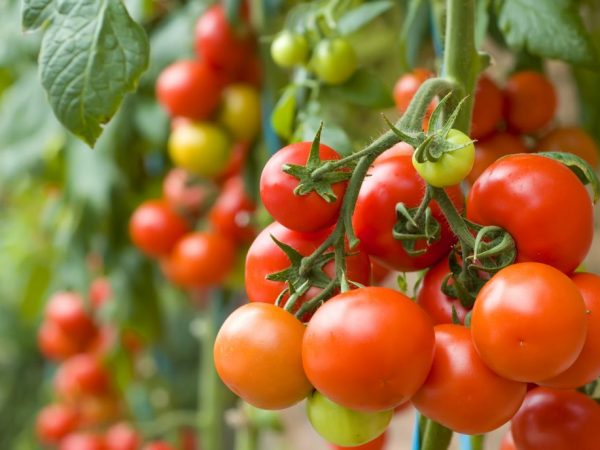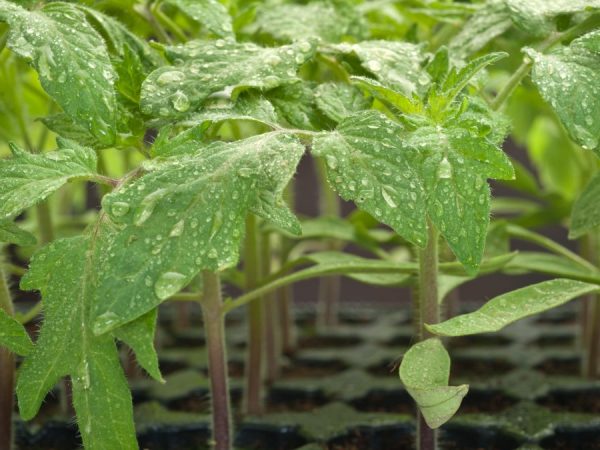Characteristics of the Japanese Dwarf tomato variety
In the modern world, there is a wide variety of tomato varieties. You can meet them on store shelves. There are well-known varieties, and there are those that many have not even heard of. One of these species is the Japanese dwarf tomato. We can say that this is a tomato for those who like to grow crops in the open field.

Characteristics of the Japanese Dwarf tomato variety
There is another tomato variety that is very similar to the Japanese dwarf, it is called the Mongolian dwarf. If you read their description, you can find some similarities, but there are also differences between them. But many reviews say that Japanese dwarf tomatoes are better in everything.
Description of the variety
The Japanese dwarf is a determinant plant.
They give their first fruits very early. It is also classified as a high-yield variety. The bush is undersized, which allows you to grow several plants side by side. Its maximum height can reach 50 cm.
The description of the variety says that pinching is not necessary. Indeed, from the moment the seedlings are planted and until the fruit is obtained, a maximum of 1-2 stepsons can form. Tomatoes need support, therefore, immediately after planting the seedlings, it is necessary to set pegs nearby. Tomatoes are not picky, which means that they can really be grown in any region of the country.
The fruit has a beautiful round shape and a pleasant red color. The weight of one tomato can reach a maximum of 70 grams. They are recommended for use in salads and preservation.
It is not known by whom and when the variety Japanese dwarf was bred. But some argue that a Siberian breeder did it. This conclusion was made due to the fact that the tomato is resistant to temperature extremes.
Landing a Japanese dwarf
The planting of the variety is carried out in the same way as for the rest of the tomato subspecies. To do this, you need to plant seeds and get seedlings. Then transfer it to open ground. If desired, the seeds can be sown directly outside.
Sowing seeds
If you decide to grow seedlings at home, then you need to prepare a container. It should be about 50x50 cm wide and 40 cm deep. Next, you should stock up on earth in which the tomatoes will grow. The characteristic says that purchased soil is perfect for this. If you don't have one at hand, then it is recommended to make it yourself.
To do this, you need to mix black soil with river sand and saturate everything with useful substances. Then you should place the earth in a container. Having previously processed it with potassium permanganate. Next, you need to prepare the seeds. Select viable ones and disinfect them.
This should be done:
- make a salty solution;
- place seeds there;
- and watch them;
- those that float are unsuitable for landing.
And in order to disinfect the seeds, you need to take a solution of potassium permanganate and soak them in it. This will save tomatoes from all kinds of insects, if any, and diseases.
After the preparatory work, you can safely plant seeds in the ground. It is better to do this in late February or early March.After planting, you need to cover the box with a plastic bag. When sprouts appear, it must be removed.
Then you should wait until two full-fledged leaves appear and make a pick. Transplant stronger seedlings into separate containers.
Seedling care

You need to water the plants with settled water.
Tomatoes Japanese dwarf must be placed on the armrest, where there is enough light. You should also observe the temperature regime. It must be at least 22 degrees with a plus sign. If daylight is not enough for seedlings, then they need to be provided with it artificially. This is done using a fluorescent lamp.
Watering is also an important component. Water should be added to the soil as the soil dries up. Do not allow waterlogging, otherwise your seedlings will simply die. It is better to water the plant with settled water or rainwater. The seedlings do not need fertilization at this moment, since the nutrients that are in the soil are enough until the moment they are planted on the street.
Planting seedlings
Tomato of this variety is best planted as soon as the air temperature is 15 degrees outside. To do this, prepare a place that must be pre-fertilized. The distance between the holes can be less than 30 cm, as the tomato grows upward. The characteristic of the variety says that the distance between the bushes should also not be great.
After preparing the place, you can safely plant seedlings. To do this, you need to take containers with seedlings and fill them well with water. Then carefully remove the tomatoes from the pots and plant them in open ground. Once all the seedlings of this variety are planted, they must be well poured. This will allow the seedlings to take root in a short period.
Tomato care
Once a Japanese dwarf is planted it must be given proper care. It consists in the following:
- watering;
- top dressing;
- loosening and mulching the soil;
- weed removal.
Watering a tomato of this variety should be in the same way as other melons. On hot days, you need to add water to the soil more often. Weed management is also important. After all, they clog the land and do not allow the culture to develop normally.
Plant feeding is carried out exactly one week after planting. The next time fertilization should be applied during the period of formation and ripening of fruits. This can be done using organic or inorganic means. Organic fertilizers are best prepared in the fall, while inorganic fertilizers are suitable for use in the spring.
Pests and insects of the Japanese dwarf
Tomato Japanese dwarf is resistant to various diseases and pests.
But this is only if you provide him with the right care. Melon ailments rarely affects this variety, but they can still occur. Therefore, it is worth carrying out prevention. It is better to do this with the help of special preparations that are sold in a gardening store.
As for pests, the tomato is often attacked by a bear and aphid. The first insect infects the plant in seedling age. Therefore, for this it is worthwhile during the planting period to introduce special preparations that scare away and destroy the parasite. Aphids attack less often, but still happens. As a prophylaxis against an insect, it is better to plant a plant next to a tomato that will scare it away.
Conclusion
Tomato Japanese dwarf is not even a bad variety. Of course, you can find different reviews about him, but mostly they are positive. Moreover, this variety is resistant to temperature extremes and various diseases.
The main advantage of the subspecies is considered by many to be early maturation. Already in late May and early June, you can enjoy delicious tomatoes. They are great for preparing a variety of dishes, but they are rarely used for transportation.


